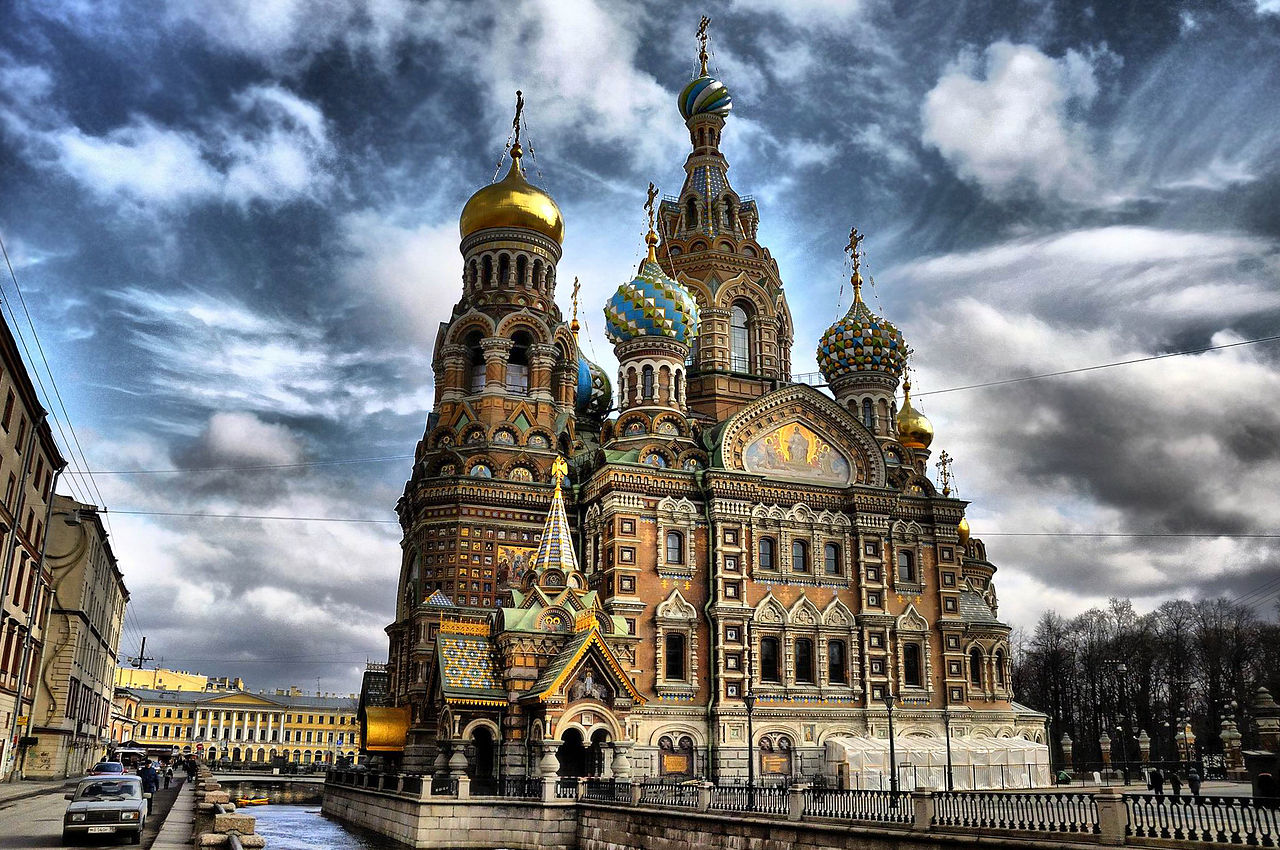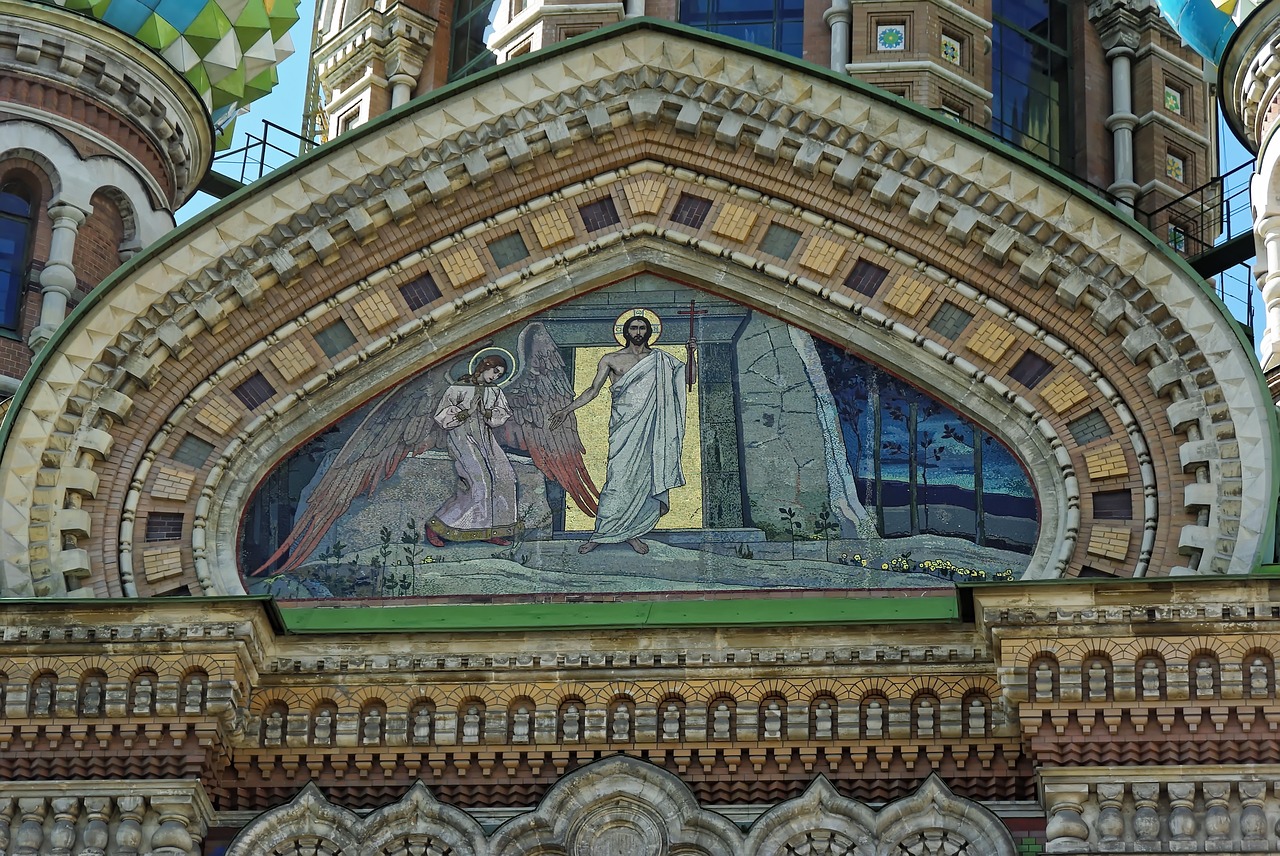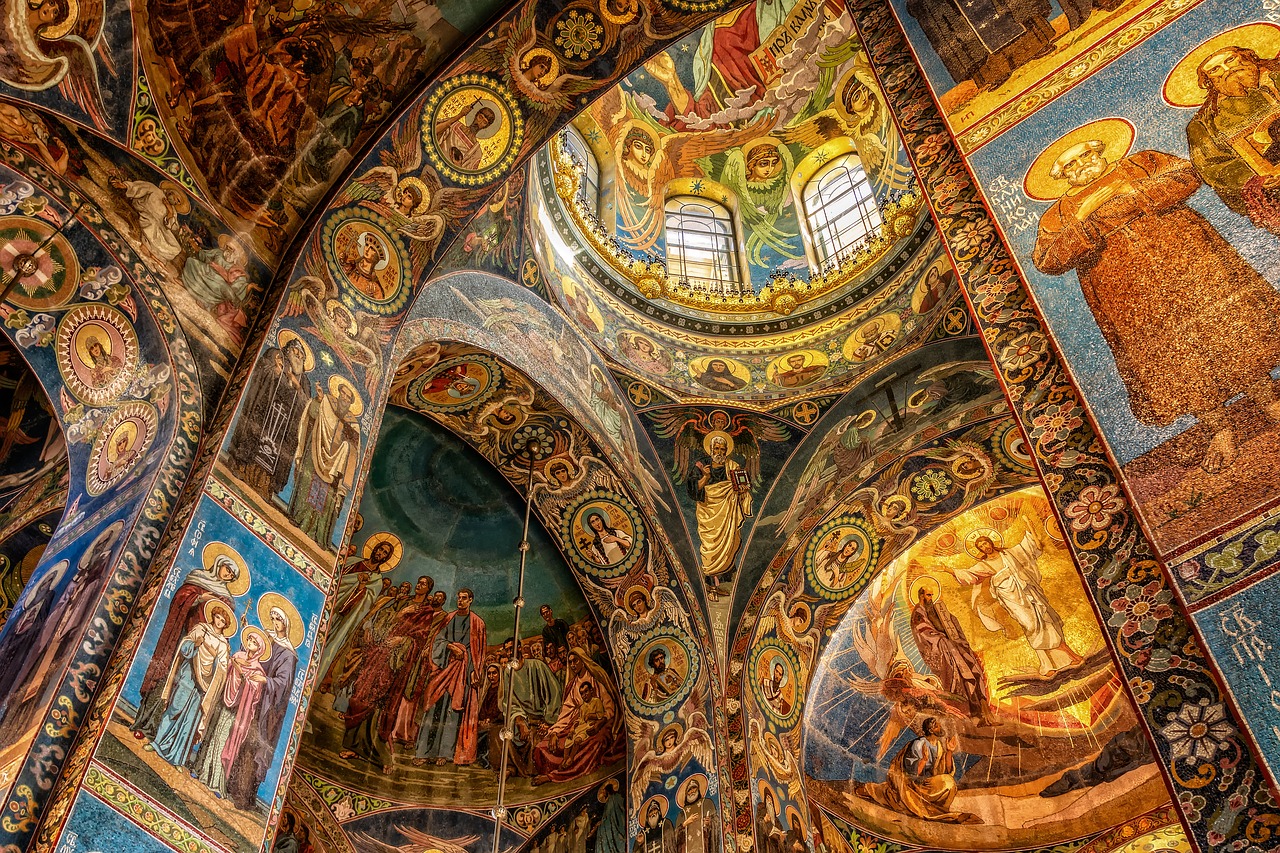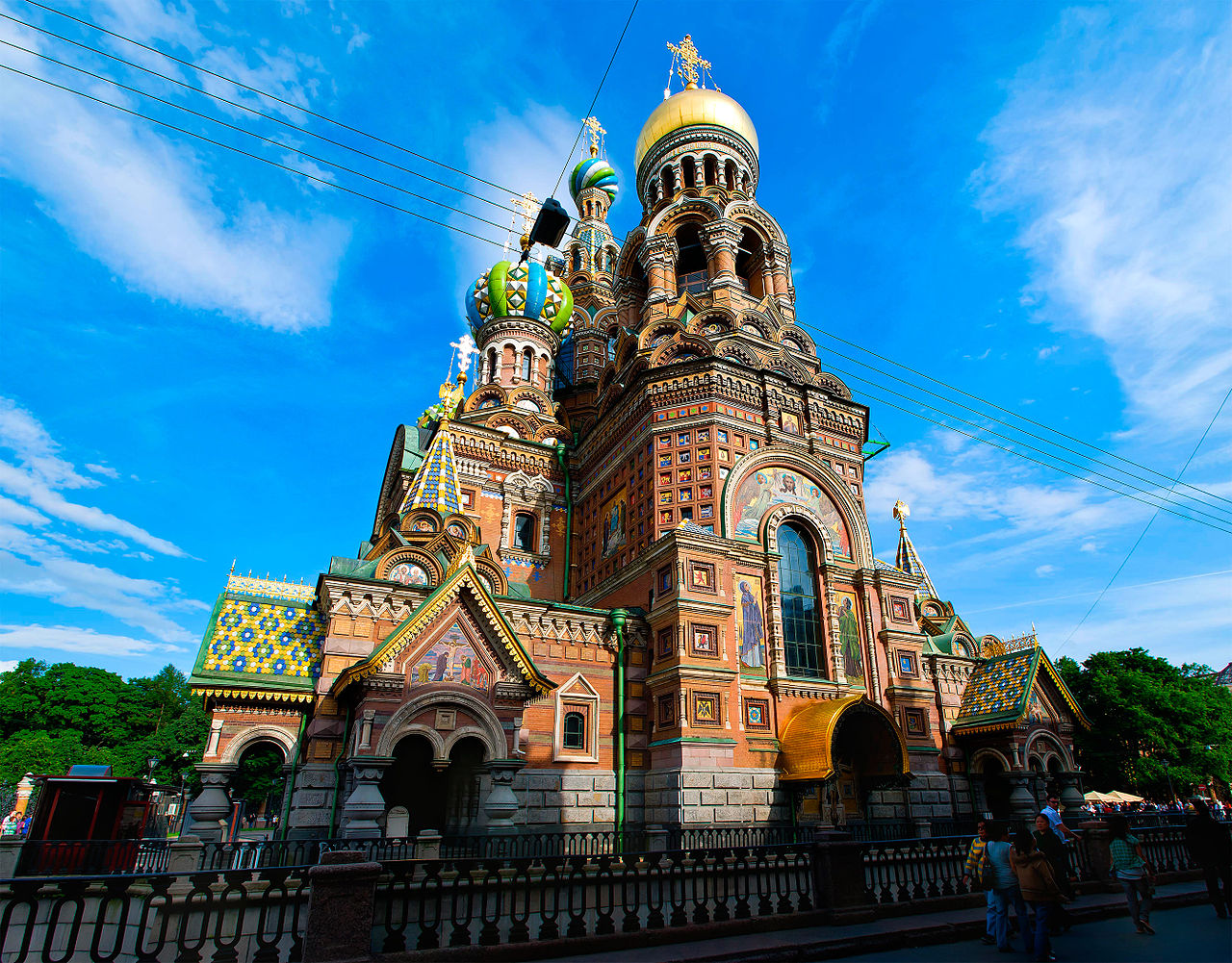Church of the Savior on Blood in Saint-Petersburg
We continue our journey through St. Petersburg which we started with the Hermitage some time ago. Today’s stop is the Cathedral of the Savior on Blood, located in the historical center of St. Petersburg on the banks of the Griboyedov Canal near the Mikhailovsky Garden and Konyushennaya Square.

History of the Cathedral
The history of the church begins with a sad event. On March 1, 1881, the emperor Alexander II was mortally wounded. He was revered by the people as the Tsar Liberator who, besides many other reforms, implemented the abolition of serfdom which gave personal freedom to 23 million peasants and opened the way to the economic development of Russia.
The very next day it was decided to build a temporary chapel on the site of the death of the emperor. It was built in April 1881 and stood until 1883. However, Alexander III, the son of the deceased emperor, wished to build not a chapel but a memorial church and announced a competition for a cathedral project.
The competition for the best design was attended by famous architects of the country. But Alexander III rejected all the projects as they were created in the “Byzantine style”. He expressed the wish for the church to be built “in the purely Russian taste of the seventeenth century”. Recalling the epoch of the first Romanovs, the building would symbolize the unity of the king and the state, the faith and the people. That is, the new church could become not just a memorial to the slain emperor, but also a monument to the Russian autocracy in general.
Only from the third attempt the project of Alfred Parland, professor of the Academy of Arts, was chosen. The solemn laying of the church took place in October 1883. Before this, a fragment of the channel grate, granite slabs and part of the cobblestone pavement, stained with the blood of Alexander II, was removed, put in boxes and transferred to storage in the chapel. It took 24 years to finish the building.
The Savior on Blood (another name is Church on Spilled Blood), built at the site of the murder of Emperor Alexander II, was solemnly consecrated on August 19, 1907. Immediately after the consecration, at noon, the first solemn liturgy was served.

The cathedral was funded by the state and was not designed for mass visits. The entrance to it was by passes. Separate services dedicated to the memory of Alexander II were performed there, daily sermons were given.
With the advent of Soviet power, the flow of state funds for the maintenance of the church ceased. In the 1920s, the Savior on Blood, like almost all Russian churches, was plundered and deprived of most of its liturgical objects.
In 1930, the church was closed, and in 1938 the Soviet government decided to demolish it. But with the beginning of the Second World War, the demolition was postponed. During the blockade of Leningrad, it was turned into a morgue. After the war, the church was rented by the Maly Opera Theater which used it as a storage warehouse for its decorations.
In 1961 an unexploded German bomb was found in the central dome of the church. Unnoticed by anyone, the bomb stayed in rafters for 18 years and was accidentally discovered by climbers of the restoration workshops. On examination, it turned out that it was a 150kg high-explosive projectile capable of obliterating the church and its surroundings. Works on its disposal were carried out by six people. It was a unique operation, which required from its participants not only skill, but also uncommon composure and courage. The projectile was removed, taken out of the city and destroyed.
Since 1968, the cathedral came under the protection of the State Inspectorate for the Protection of Monuments. In the 1970s, works were carried out to prepare the building for restoration of its interior decorations. The restoration itself began only in the early 80s. The scaffolding around the cathedral stayed for a very long time. People used to say that the scaffolding would stand as long as the Soviet government does. It’s probably a coincidence, but the scaffolding was dismantled shortly before the August events in Moscow in 1991, after which the USSR ceased to exist.

After the renovation and 90 years after consecration, on August 19, 1997, the memorial museum was opened to visitors.
In 2004 the Church of the Savior on Blood was re-consecrated, and the first liturgy took place in it. Since 2010, regular services began to take place.
The memory of Emperor Alexander II is deeply revered in the cathedral. On the day of his tragic death, episcopal worship is held with a special commemoration of the murdered Sovereign.
The architectural features of the Savior on Blood
Although the church has perpetuated a tragic event in the history of Russia, the nine-domed building impresses with its bright, colorful beauty. On the background of the strict architecture of St. Petersburg, it looks like a toy.
During the construction of the church, new construction technologies were applied, the building was completely electrified. The church of the Savior on Blood was lit by 1689 light bulbs. In order for the water from the canal do not pass under the building, for the first time in the construction practice of St. Petersburg a concrete foundation was constructed under the entire area of the building.
The architecture of the church is an example of the late stage of the evolution of the “Russian style”. The building is a collective image of the Russian Orthodox church reflecting the features of Moscow and Yaroslavl of XVI-XVII centuries. The architecture of the Moscow Cathedral of St. Basil the Blessed had a great influence on the appearance of the church.
The interior of the cathedral has a unique look: it is an amazing combination of mosaic and stone decoration. The mosaic was created by sketches of more than 30 artists. The area of mosaic decoration is more than 7 thousand square meters! In Russia, and in Europe, the church takes the first place in the number of mosaics.
On the outside walls of the church there are memorial plaques telling about the “great” reforms of Alexander II.
The height of the church is 81 meters which symbolizes the year of the death of the tsar. The floor of the church, with an area of over 600 square meters, is laid out of more than 10 varieties of Italian colored marble. The capacity of the cathedral is 1600 people.
Especially significant in the church, after the altar, is the place where the attempt on the life of the Emperor Alexander took place. Over the fragment of the cobblestone pavement with the emperor’s blood, a canopy (a special construction that is supported by columns) was built. On top of the canopy, there is a cross made of topaz.

Tourist information
Nowadays, church services are held on Sundays and public holidays in the cathedral. The church is also open to tourists, the ticket price is very affordable.
The nearest metro station is “Nevsky Prospect”, from there to the church is a few minutes on foot.
Come to Saint-Petersburg and appreciate the beauty of one of the most remarkable monuments of architecture in Russia!






